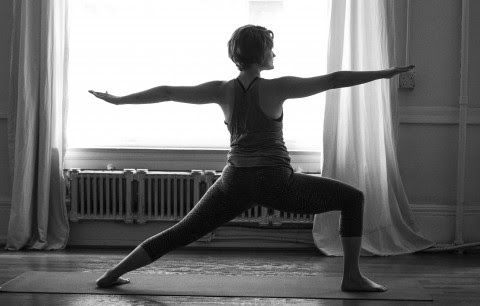Have you ever lost focus during your practice?
Have thoughts carried you out of your body and your breath?
Your gaze may be the key to maintaining a strong and steady focus.
Dristhi is a practice in which we control our gaze during asana in order to control our attention. By intentionally setting our gaze we draw our awareness inward, learning how postures feel rather than how they appear.
Wandering eyes create distraction while a stable and steady gaze creates focus. Finding a steady gaze can also aid in finding balance and proper alignment in many postures.
Finding a steady gaze sounds simple right? Well as simple as it sounds it is a lot harder than we think. The next time you’re in class try observe where your gaze rests. On the teacher? On other students? You may not even notice how often your gaze wanders until you begin to actively observe it.
Below is a list of key Dristhi points laid out by Pantajali Jois. Different dristhis are assigned to different asanas, aiding in energetic focus and physical alignment.
1. Hastagram (pictured above)
Gaze towards the hand or over the finger tips.
This gaze is used in many postures where the arms extend such as warrior two. This gaze is especially helpful while moving through multiple postures. Ever lose your balance moving from warrior two to reverse warrior? Try keeping your gaze at your hand while you transition. This will aid balance making this transition smooth and graceful.
2. Padayoragram
Gaze towards the toes.
Use this gaze when moving into seated forward folds. Often our tendency when folding is to round the spine and tuck the chin. This form lessens the benefits we receive in our hips and spine from folding. Keeping your gaze at your toes will help you keep a long spine. Pro-tip: If this gaze creates strain in your neck switch to Nasagram drishti; tip of nose gaze. This will still create length through the spine, while lessening tension in the neck.
3. Arshva and Parshva
Gaze far to the right or left.
We reserve this set for twisting postures. The rule of thumb here is to look where your posture is going. So if you are twisting to the right, send your gaze over your right shoulder. This will encourage the twist throughout the entire length of your spine.
4. Nasagram
Gaze towards the tip of the nose or straight ahead.
This is my go to gaze because finding this gaze will create length through the back of the neck in any posture. A great place to try this gaze is in high plank! When we let the head drop and our gaze fall back it creates a heavy and hard posture. Finding length through the head and neck creates a strong and lifted posture.
Gazing straight ahead is a great gaze for transition between postures. Try keeping the gaze forward when folding and feel the difference in the quality of your movements!
5. Urdhva or Antara
Gaze up towards the sky.
We use this gaze in back bending postures, such as upward facing dog. Much like gazing towards the thumbs the key here is to avoid harming the neck by over doing it. A great way to keep from going too far is to enter into the gaze slowing. Start by sending your gaze down gently tucking your chin. As you breathe slowly walk your gaze as high up as feels comfortable. Over time you will feel your gaze lifting higher as your neck becomes more flexible.
6. Nabhi Chakra
Gaze towards the navel.
Mostly commonly used in downward facing dog, lifting the gaze toward the naval is an easy way to find a light and easy posture. When we let the head and neck hang we place unnecessary tension on our necks. Keeping the gaze towards the naval is also a great way to remember to breath and to engage our cores.
Off the Mat
The word Dristhi is defined as finding a point of view. Finding a strong and steady gaze on the mat can translate into finding new perspectives in your daily life. Like all aspects of yoga it is a practice, not perfection!
Do you use Dristhi during your practice? Share how it has aided your growth in the comments below.
Love elephant and want to go steady?
Sign up for our (curated) daily and weekly newsletters!
Editor: Renée Picard
Photos: courtesy of the author















Read 1 comment and reply